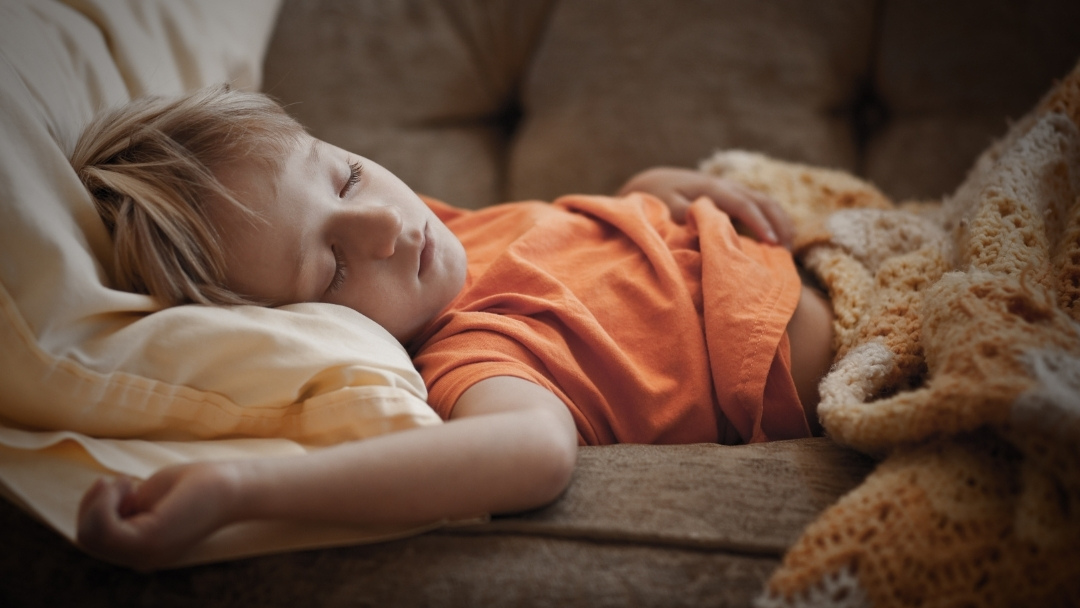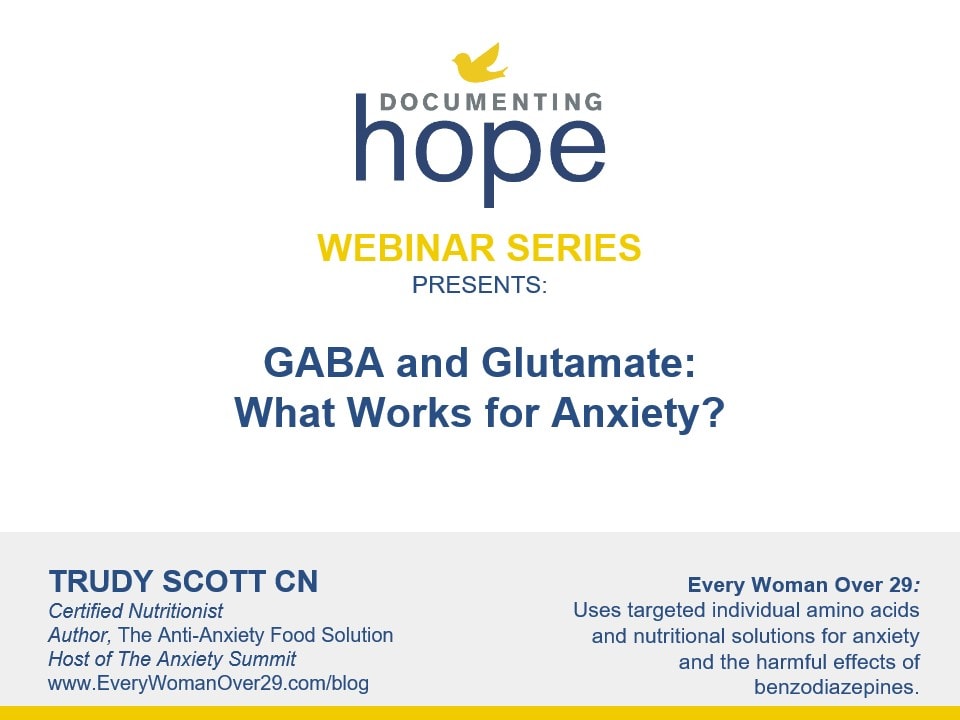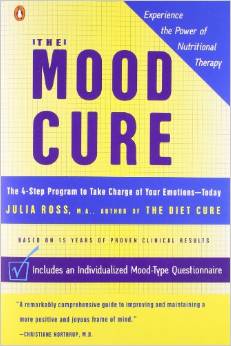In this blog post, Kelly Dorfman, MS, RND, offers sleep strategies for autism, ADHD, SPD and other developmental delays.
Poor Sleep Is Common
Sleep disturbances are common in children with developmental and attentional issues because they have trouble recognizing their body’s need for rest. Feeling sleepiness apart from all the other incoming information is as difficult as other sensory-integration tasks, such as paying attention in a crowded classroom or getting to the bathroom in time. Poor sleep regulation is simply another symptom of the sensory system getting confused and overloaded.
Adults with sleep problems are instructed to get more exercise, avoid stimulants and have a regular bedtime. The same advice works well for children with regulation issues.
Encourage Motor and Sensory Stimulation
Providing motor and sensory stimulation during the day in the form of exercise or occupational-therapy techniques like brushing, prevents the need to seek out excitement at three o’clock in the morning. One way the body communicates its unmet needs is by restlessness or by waking itself up.
Even with proper exercise, children with high sensory-stimulation needs may not be able to last the 10 to 12 hours through the night (the amount of sleep needed by most children) without physical contact. Many parents report that their child wakes at night and cannot fall back asleep until wedged in bed between them.
Because our culture has moved away from a shared family bed, this presents an emotional dilemma for parents (though the arrangement tends to benefit the child). A possible compromise position would be a small mattress on the floor to accommodate night wakers.
Establish Regular Bedtime
A regular bedtime provides crucial structure for those who cannot easily connect with their biological clocks. The neurotransmitter, serotonin, increases in concentration through the day, reaching peak levels when it is time to sleep.
When in balance, we sense the serotonin build-up as sleepiness and a signal to retire for the evening. If the sleepy feeling is absent or serotonin is imbalanced, sleep can be re-regulated anyway by giving the body a rigid schedule. The hormone will adjust itself to the schedule over time.
Eliminate Stimulants
Stimulants are plentiful in children’s lives today in the form of artificial flavors, colors, and additives, as well as in medicines routinely prescribed for ADD/ADHD and asthma. The serious sleep problems caused by Ritalin were tragically highlighted when several children died of heart failure while using the drug Clonidine (attempting to control the sleeplessness engendered by Ritalin).
If sleep is an issue, parents might consider alternatives to stimulant medication and should try to minimize dietary stimulants by avoiding caffeinated and highly processed foods.
Identify Hidden Allergens
A common cause of sleep disturbance is unrecognized food sensitivities and intolerances. Removing allergens from the diet can help those who wake frequently or have delays in falling asleep. For year-round sleep interruptions, look for allergies to milk products and family pets.
Environmental allergies, such as pollen, are easier to spot because they cause seasonal changes in sleep patterns. Mold allergies, however, can be hard to diagnose because exposure shifts unpredictably throughout the year.
Correct Nutritional Deficiencies
In addition to allergies, calcium and magnesium deficiencies can also contribute to restlessness. Review your child’s intake of these nutrients and be sure he/she is getting 700-1,000 mg of calcium and at least 100-300 mg of magnesium in well-absorbed forms.
Look Into Melatonin
If your child still has sleep problems, talk to your health care provider about the possible use of melatonin, which has a proven sleep-inducing effect in humans. In addition, it appears to strengthen the immune system.
Melatonin (N-acetyl-5-methoxyserotonin) is a hormone-like compound produced by the brain’s pineal gland and other tissues. The enzymes that control melatonin synthesis are activated by light and deactivated by dark. Consequently, the hormone affects the regulation of natural rhythms, particularly sleep cycles.
One small study found that melatonin successfully treated serious sleep disorders in hyperactive and neurologically compromised children. Prompt sedation, improved sleep quality, and decreased irritability occurred in almost all 15 cases with no other side effects.
Though no melatonin toxicity has been found despite the administration of extremely large doses, the medical community recommends using it with caution. Much of the concern is a reaction to melatonin’s immense popularity and heavy usage among the lay public. Drug interactions are of particular concern.
Melatonin should not be taken with Prozac or other SSRI drugs because they already increase serotonin levels. As for dosage, generally small doses (0.5 to 1.5 mg) are recommended for children and should be administered one hour before the desired bedtime. Sometimes several days are needed before parents notice results. As with any over-the-counter substance, parents should discontinue melatonin immediately and consult their health care provider if they suspect problems.
About Kelly Dorfman MS LND
Kelly Dorfman is one of the world’s foremost experts on using nutrition therapeutically to improve brain function, energy and mood. Kelly’s special talent for integrating information from many sources and finding practical solutions has made her a popular speaker and workshop leader. She lectures extensively and is a member of Platform (formerly the National Speakers Association) and has been featured on numerous television programs including CNN’s American Morning.
Kelly’s award winning book, Cure Your Child With Food: The Hidden Connection Between Nutrition and Childhood Ailments (formerly known as What’s Eating Your Child) was given rave reviews by Publishers Weekly and the Washington Post.

As a go-to expert on nutrition issues, Kelly is frequently interviewed and quoted in the media. She has been featured in articles in The Wall Street Journal, Parade, Bethesda magazine, Living Without magazine, and the Huffington Post.
Kelly holds a master’s degree in nutrition/biology and is a licensed nutrition dietitian. She is a co-founder of Developmental Delay Resources, which has merged with Epidemic Answers. You can find out more about Kelly and her practice at kellydorfman.com
Still Looking for Answers?
Visit the Documenting Hope Practitioner Directory to find a practitioner near you.
Join us inside our online membership community for parents, Healing Together, where you’ll find even more healing resources, expert guidance, and a community to support you every step of your child’s healing journey.
Sources & References
Arab, A., et al. The Role of Magnesium in Sleep Health: a Systematic Review of Available Literature. Biol Trace Elem Res. 2023 Jan;201(1):121-128.
Aschoff, J. CIRCADIAN RHYTHMS IN MAN. Science. 1965 Jun 11;148(3676):1427-32.
Ballard, R., et al. Bright Light Therapy for Major Depressive Disorder in Adolescent Outpatients: A Preliminary Study. Clocks Sleep. 2024 Jan 30;6(1):56-71.
Bondopadhyay, U., et al. The Role of the Circadian System in Attention Deficit Hyperactivity Disorder. Adv Exp Med Biol. 2021:1344:113-127.
Brandão, L.E.M., et al. Exposure to a more unhealthy diet impacts sleep microstructure during normal sleep and recovery sleep: A randomized trial. Obesity (Silver Spring). 2023 Jul;31(7):1755-1766.
Cain, S.W., et al. Evening home lighting adversely impacts the circadian system and sleep. Sci Rep. 2020 Nov 5;10(1):19110.
Cassone, V.M., et al. Melatonin, the pineal gland, and circadian rhythms. J Biol Rhythms. 1993:8 Suppl:S73-81.
Chang, A.M., et al. Evening use of light-emitting eReaders negatively affects sleep, circadian timing, and next-morning alertness. Proc Natl Acad Sci U S A. 2015 Jan 27;112(4):1232-7.
Chang, Y., et al. Mechanism of Sleep Disturbance in Children with Atopic Dermatitis and the Role of the Circadian Rhythm and Melatonin. Int J Mol Sci. 2016 Mar 29;17(4):462.
Chen, C.Q., et al. Distribution, function and physiological role of melatonin in the lower gut. World J Gastroenterol. 2011 Sep 14;17(34):3888-98.
Cheung, I.N., et al. Morning and Evening Blue-Enriched Light Exposure Alters Metabolic Function in Normal Weight Adults. PLoS One. 2016 May 18;11(5):e0155601.
Cohen-Mekelburg, S., et al. Morning light treatment for inflammatory bowel disease: a clinical trial. BMC Gastroenterol. 2024 May 22;24(1):179.
Coogan, A.N., et al. A systematic review of circadian function, chronotype and chronotherapy in attention deficit hyperactivity disorder. Atten Defic Hyperact Disord. 2017 Sep;9(3):129-147.
Czeisler, C.A., et al. Sleep and circadian rhythms in humans. Cold Spring Harb Symp Quant Biol. 2007:72:579-97.
Dauchy, R.T., et al. Daytime Blue Light Enhances the Nighttime Circadian Melatonin Inhibition of Human Prostate Cancer Growth. Comp Med. 2015 Dec;65(6):473-85.
Esaki, Y., et al. Wearing blue light-blocking glasses in the evening advances circadian rhythms in the patients with delayed sleep phase disorder: An open-label trial. Chronobiol Int. 2016;33(8):1037-44.
Fagundo-Rivera, J., et al. Relationship between Night Shifts and Risk of Breast Cancer among Nurses: A Systematic Review. Medicina (Kaunas). 2020 Dec 10;56(12):680.
Fargason, R.E., et al. Correcting delayed circadian phase with bright light therapy predicts improvement in ADHD symptoms: A pilot study. J Psychiatr Res. 2017 Aug:91:105-110.
Figueiro, M.G., et al. Light modulates leptin and ghrelin in sleep-restricted adults. Int J Endocrinol. 2012:2012:530726.
Franzigo, M., et al. Chrono-Nutrition: Circadian Rhythm and Personalized Nutrition. Int J Mol Sci. 2023 Jan 29;24(3):2571.
Gabel, V., et al. Effects of artificial dawn and morning blue light on daytime cognitive performance, well-being, cortisol and melatonin levels. Chronobiol Int. 2013 Oct;30(8):988-97.
Gooley, J.J., et al. Exposure to room light before bedtime suppresses melatonin onset and shortens melatonin duration in humans. J Clin Endocrinol Metab. 2011 Mar;96(3):E463-72.
Gringras, P., et al. Bigger, Brighter, Bluer-Better? Current Light-Emitting Devices – Adverse Sleep Properties and Preventative Strategies. Front Public Health. 2015 Oct 13:3:233.
Halberg, F., et al. [FREE-RUN STUDY OF CIRCADIAN RHYTHMS OF THE PULSE, OF WAKING-SLEEP ALTERNATION AND ESTIMATION OF TIME DURING THE 2 MONTHS OF SUBTERRANEAN SOJOURN OF A YOUNG ADULT MALE]. C R Hebd Seances Acad Sci. 1965 Jan 25:260:1259-62.
Hartstein, L.E., et al. High sensitivity of melatonin suppression response to evening light in preschool-aged children. J Pineal Res. 2022 Mar;72(2):e12780.
Hester, L., et al. Evening wear of blue-blocking glasses for sleep and mood disorders: a systematic review. Chronobiol Int. 2021 Oct;38(10):1375-1383.
Hvolby, A. Associations of sleep disturbance with ADHD: implications for treatment. Atten Defic Hyperact Disord. 2015 Mar;7(1):1-18.
IARC Working Group on the Identification of Carcinogenic Hazards to Humans. Night Shift Work: IARC Monographs on the Identification of Carcinogenic Hazards to Humans Volume 124. International Agency for Research on Cancer, World Health Organization, Lyon (FR), 2020.
Kesztyüs, D., et al. Associations of time-restricted eating with health-related quality of life and sleep in adults: a secondary analysis of two pre-post pilot studies. BMC Nutr. 2020 Dec 17;6(1):76.
Kleitman, N. Sleep and wakefulness. Univ. Chicago Press, 1963.
Kianersi, S., et al. Chronotype, Unhealthy Lifestyle, and Diabetes Risk in Middle-Aged U.S. Women: A Prospective Cohort Study. Ann Intern Med. 2023 Oct;176(10):1330-1339.
Koniver L. Practical applications of grounding to support health. Biomed J. 2023;46(1):41–47.
Korman, M., et al. ADHD 24/7: Circadian clock genes, chronotherapy and sleep/wake cycle insufficiencies in ADHD. World J Biol Psychiatry. 2020 Mar;21(3):156-171.
Leone, M., et al. Melatonin use and the risk of self-harm and unintentional injuries in youths with and without psychiatric disorders. J Child Psychol Psychiatry. 2023 Jul;64(7):1027-1036.
Lok, R., et al. Perils of the nighttime: Impact of behavioral timing and preference on mental health in 73,888 community-dwelling adults. Psychiatry Res. 2024 May 15:337:115956.
Makateb, A., et al. Investigating the effects of a blue-blocking software on the daily rhythm of sleep, melatonin, cortisol, positive and negative emotions. Chronobiol Int. 2023 Jul 3;40(7):896-902.
Malin, S.K., et al. Early chronotype with metabolic syndrome favours resting and exercise fat oxidation in relation to insulin-stimulated non-oxidative glucose disposal. Exp Physiol. 2022 Nov;107(11):1255-1264.
Martel, J., et al. Influence of electromagnetic fields on the circadian rhythm: Implications for human health and disease. Biomed J. 2023 Feb;46(1):48-59.
Martel, J. Is a return to nature a piece of the health puzzle? Biomed J. 2023 Feb;46(1):8-10.
Megha, K.B., et al. Significance of Melatonin in the Regulation of Circadian Rhythms and Disease Management. Mol Neurobiol. 2024 Jan 11.
Mills, J.N. The circadian rhythms of human subjects without timepieces or indication of the alternation of day and night. J Physiol. 1974 Aug;240(3):567-94.
Moore-Ede., M. Lights should support circadian rhythms: evidence-based scientific consensus. Front. Photonics. 2023 Oct 03 (4).
Naganuma, F., et al. Histamine N-methyltransferase regulates aggression and the sleep-wake cycle. Sci Rep. 2017 Nov 21;7(1):15899.
Ogundele, M.O., et al. Management of sleep disorders among children and adolescents with neurodevelopmental disorders: A practical guide for clinicians. World J Clin Pediatr. 2022 Mar 15;11(3):239-252.
Ondrusova, K., et al. Subcutaneous white adipocytes express a light sensitive signaling pathway mediated via a melanopsin/TRPC channel axis. Sci Rep. 2017 Nov 27;7(1):16332.
Randjelović, P., et al. The effect of reducing blue light from smartphone screen on subjective quality of sleep among students. Chronobiol Int. 2023 Mar;40(3):335-342.
Sancho-Balsells, A., et al. Brain-gut photobiomodulation restores cognitive alterations in chronically stressed mice through the regulation of Sirt1 and neuroinflammation. J Affect Disord. 2024 Jun 1:354:574-588.
Schwalfenberg, G.K. The Importance of Magnesium in Clinical Healthcare. Scientifica (Cairo). 2017:2017:4179326.
Shin, J. Neuroprotective effects of melatonin in neurodegenerative and autoimmune central nervous system diseases. Encephalitis. 2023 Apr;3(2):44-53.
Sun, J., et al. Sleep Deprivation and Gut Microbiota Dysbiosis: Current Understandings and Implications. Int J Mol Sci. 2023 May 31;24(11):9603.
Uğurlu, A.K., et al. Is blue light exposure a cause of precocious puberty in male rats? Front Endocrinol (Lausanne). 2023 Jun 20:14:1190445.
van Andel, W., et al. Effects of chronotherapy on circadian rhythm and ADHD symptoms in adults with attention-deficit/hyperactivity disorder and delayed sleep phase syndrome: a randomized clinical trial. Chronobiol Int. 2021 Feb;38(2):260-269.
Wang, W., et al. Long-term artificial/natural daytime light affects mood, melatonin, corticosterone, and gut microbiota in rats. Appl Microbiol Biotechnol. 2023 Apr;107(7-8):2689-2705.
Wright, Jr., K.P. Entrainment of the human circadian clock to the natural light-dark cycle. Curr Biol. 2013 Aug 19;23(16):1554-8.
Yoon, J., et al. Assessing the Feasibility and Efficacy of Pre-Sleep Dim Light Therapy for Adults with Insomnia: A Pilot Study. Medicina (Kaunas). 2024 Apr 14;60(4):632.
Zhong, Z., et al. Administration of blue light in the morning and no blue-ray light in the evening improves the circadian functions of non-24-hour shift workers. Chronobiol Int. 2024 Feb;41(2):267-282.
Zielinski, M.R., et al. Fatigue, Sleep, and Autoimmune and Related Disorders. Front Immunol. 2019 Aug 6:10:1827.
Resources
Articles
Siffre Cave Study Psychology. Study Smarter.
What happens to a person’s biological clock in isolation? Encyclopedia Britannica. Accessed 9 June 2024.
Cartoons
Weinzaepflen, Coline. Enlighten your clock: How your body tells time.
Devices
SOL Telescope™ — Floorlight w/SOL bioBulb (White)
eBooks
Sleep Better, Live Better. How to Hack Your Smartphone, PC & Laptop for Better Sleep.
Sleep Better, Live Better. Why Light Is Just as Important as Food.
Software
Websites
Dr. Jack Kruse: Reversing Disease for Optimal Health







